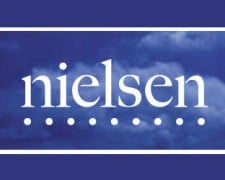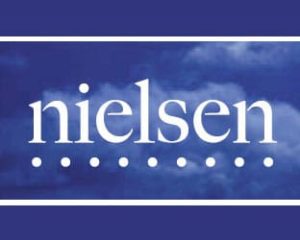
 Here’s a great example of how the Nielsen-Arbitron merger can benefit cross-media measurement for local broadcasters: Nielsen and CBS announced results of the first ever proof of concept (POC) for local television + radio audience measurement. Leveraging Nielsen’s local television and audio panels, Nielsen and CBS collaborated to demonstrate the additive power of combining media buys for major ad campaigns. The POC combined audience data from CBS’ local TV and radio assets in order to build a foundation that measured combined and unduplicated reach across both media. Nielsen intends to open participation in the pilot across a wider group of clients to further strengthen cross-media selling models.
Here’s a great example of how the Nielsen-Arbitron merger can benefit cross-media measurement for local broadcasters: Nielsen and CBS announced results of the first ever proof of concept (POC) for local television + radio audience measurement. Leveraging Nielsen’s local television and audio panels, Nielsen and CBS collaborated to demonstrate the additive power of combining media buys for major ad campaigns. The POC combined audience data from CBS’ local TV and radio assets in order to build a foundation that measured combined and unduplicated reach across both media. Nielsen intends to open participation in the pilot across a wider group of clients to further strengthen cross-media selling models.
Creating a measurable foundation gives advertisers using marketing mix models as a basis for their media planning the tools they need to accurately account for how local television and radio together contribute to driving sales. This POC begins the conversation into the data needed by those models to correctly value local television and radio.
In some cases, using local television and radio together doubled the reach in certain markets. In the five markets measured in the POC, an advertiser could reach anywhere from 84% to as high as 93% of all adults 18+ within a month by leveraging local television and radio together. Advertisers would be able to see the benefits of combining the buying of these media and dayparts together. For instance, combining television primetime and late news all week with morning drive on weekdays, an advertiser could reach 75% of adults 18-49 in Boston within four weeks. In this example, a local media buy could make sense for fast food advertisers. Full results of the study will be presented at the NAB show titled “Local Measurement: All Media/All Users/All the Time” on 4/8.
Using data from October 2013 in five key CBS markets, the POC fused Nielsen Audio’s Portable People Meter listening data with Nielsen’s Local People Meter television data. Matching consumers across the two panels in each of these markets allowed for modeling cross-platform media consumption. By finding characteristics common across both Nielsen’s audio and television panels in each of these markets, the listening behavior was ascribed to those panelists with known viewing behavior.
“Industry-standard measurement is a first step toward showing large advertisers what local advertisers already know— there is a lot of value to combining local television and radio in a media buy,” said David Poltrack, Chief Research Officer, CBS Corp. “We will continue working with Nielsen to bring to the industry the rich analytics, reporting tools and planning software needed to prove these benefits to advertisers. The long-term plan is to include online as well. This proof of concept demonstrates the power of broadcasting to quickly and frequently reach mass audiences.”
“The consumer is in the driver’s seat and engages with media and marketing messages in an increasingly dynamic way,” stated Lynda Clarizio, President U.S. Media, Nielsen. “Developing representative and industry-standard models of cross-media measurement allows the industry to have confidence in their planning decisions and empowers a healthy marketplace.”
RBR-TVBR observation: As Nielsen noted, integrating measurement of reach, frequency and ultimately sales response across both local television and radio platforms will benefit the industry as a whole. POC test results will inform Nielsen’s cross-media product development strategies, expand local media planning analytics by contributing more robust inputs for marketing mix modeling.





